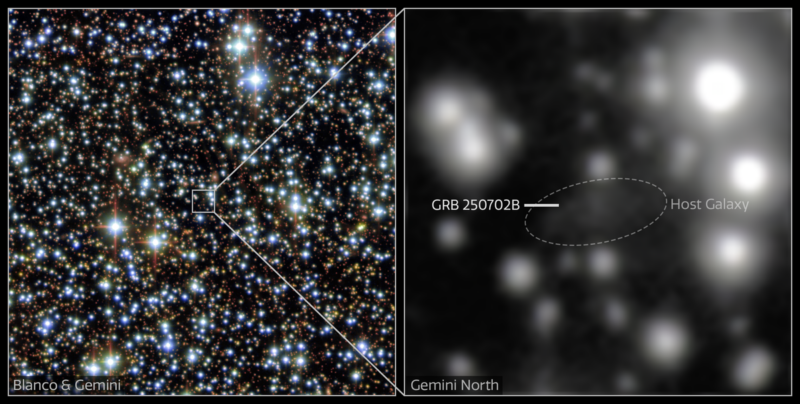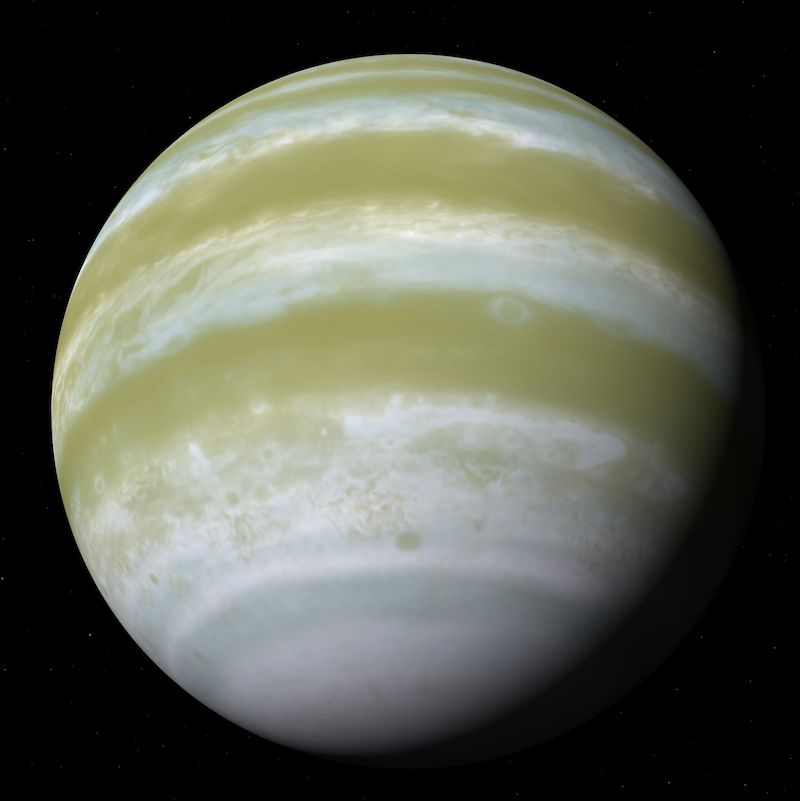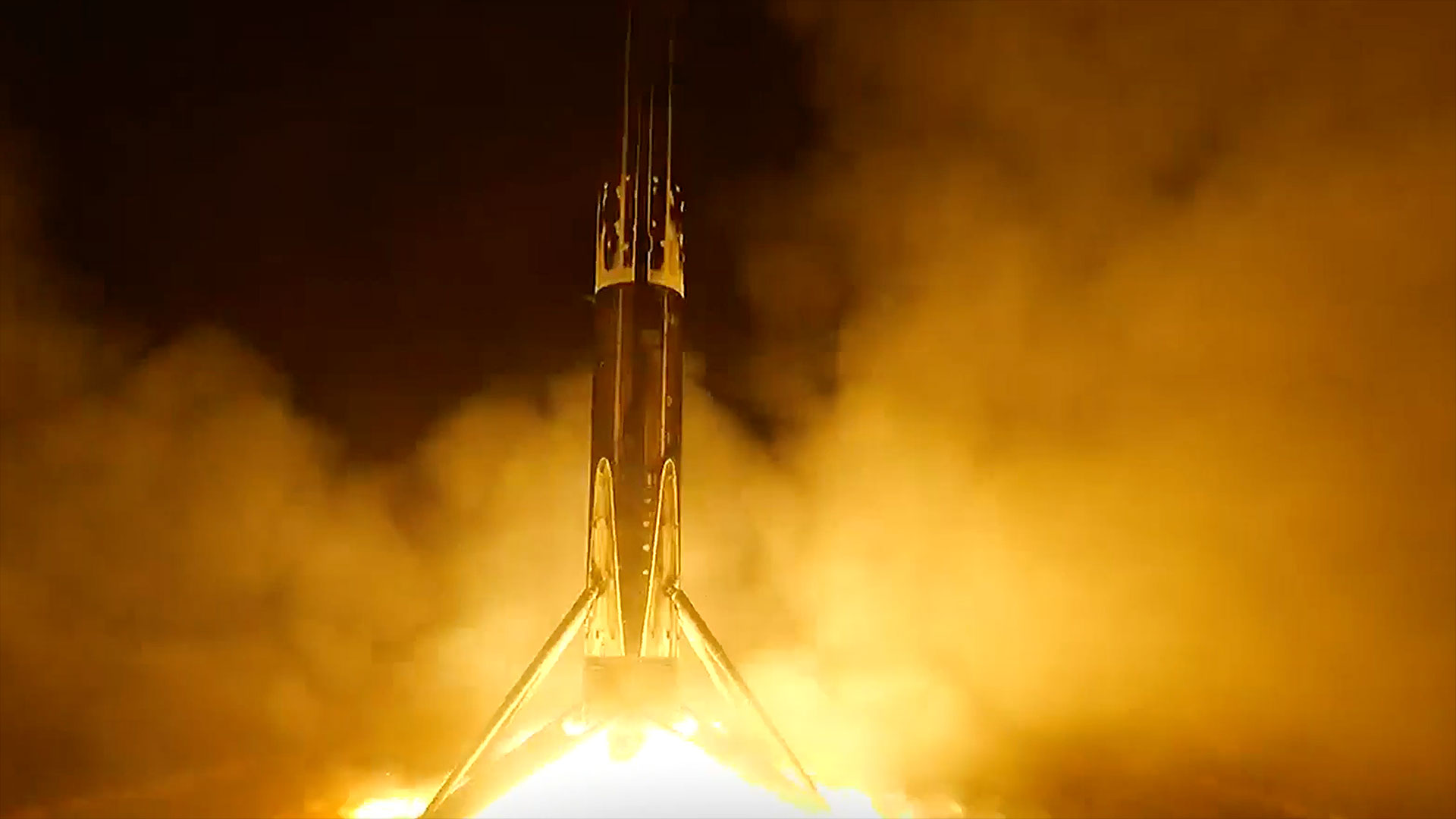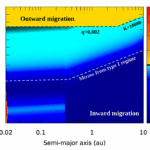Now Reading: BREAKING: Double detonation supernova destroyed this star!
-
01
BREAKING: Double detonation supernova destroyed this star!
BREAKING: Double detonation supernova destroyed this star!
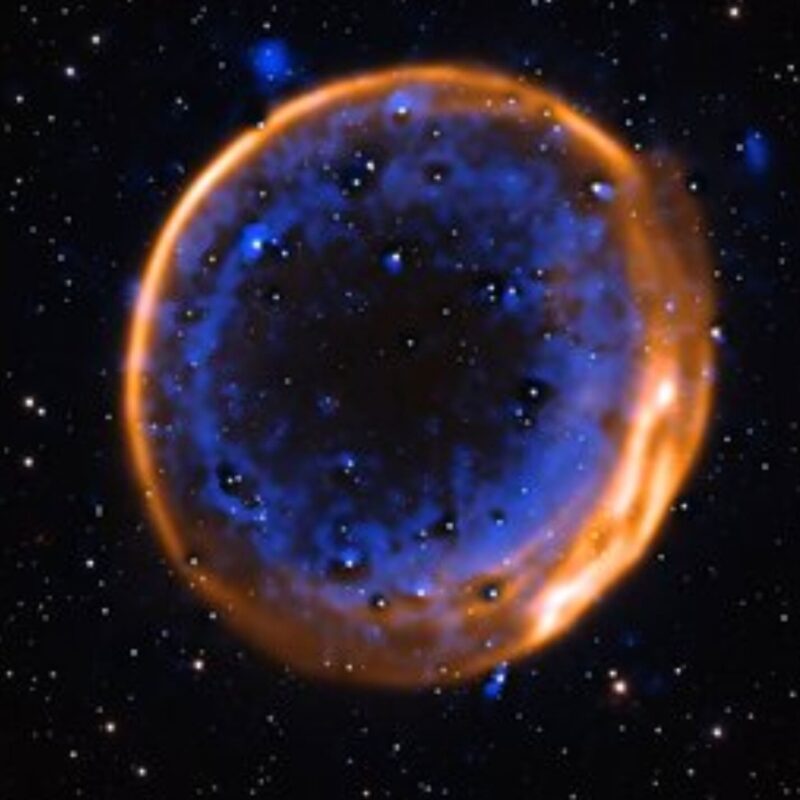
Recent studies have hinted that at least some Type Ia supernovae could be best explained by a double explosion. And now astronomers have captured a new image proving this hunch was right! We spoke earlier this week with the scientists who captured this supernova remnant image. Join us live at 12:15 p.m. CDT (17:15 UTC) on Wednesday, July 2, as we explain the science … in the scientists’ own words. Watch in the player above or on YouTube.
The European Southern Observatory released this news on July 2, 2025. Edits by EarthSky.
For the first time, astronomers have obtained an image of a star that met its end by detonating twice. Scientists used the European Southern Observatory’s Very Large Telescope (VLT) to image the centuries-old remains of supernova SNR 0509-67.5. They announced today (July 2, 2025) that they’ve found patterns confirming its star suffered not one but two explosive blasts. This discovery shows some of the most important explosions in the universe in a new light, the scientists said.
The scientists published their results on July 2, 2025, in the peer-reviewed journal Nature Astronomy.
An important variety of supernova
Most supernovae are the explosive deaths of massive stars. But one important variety comes from an unassuming source. White dwarfs – the small, inactive cores left over after stars like our sun burn out their nuclear fuel – can produce what astronomers call a Type Ia supernova.
Priyam Das, a Ph.D. student at the University of New South Wales Canberra, Australia, led the study. He said:
The explosions of white dwarfs play a crucial role in astronomy. Much of our knowledge of how the universe expands rests on Type Ia supernovae. And they are also the primary source of iron on our planet, including the iron in our blood.
Yet, despite their importance, the long-standing puzzle of the exact mechanism triggering their explosion remains unsolved.
Models of Type 1a supernova blasts
All models that explain Type Ia supernovae begin with a white dwarf in a pair of stars. If it orbits close enough to the other star in this pair, the dwarf can steal material from its partner. In the most established theory behind Type Ia supernovae, the white dwarf accumulates matter from its companion until it reaches a critical mass, at which point it undergoes a single explosion.
But recent studies have hinted that at least some Type Ia supernovae could be better explained by a double explosion, triggered before the star reached this critical mass.
Now, astronomers have captured a new image that proves their hunch was right: at least some Type Ia supernovae explode through a “double-detonation” mechanism instead. In this alternative model, the white dwarf forms a blanket of stolen helium around itself, which can become unstable and ignite. This first explosion generates a shockwave that travels around the white dwarf and inward, triggering a second detonation in the core of the star, ultimately creating the supernova.
Clear, visual evidence
Until now, there had been no clear, visual evidence of a white dwarf undergoing a double detonation. Recently, astronomers have predicted that this process would create a distinctive pattern or fingerprint in the supernova’s still-glowing remains, visible long after the initial explosion. Research suggests that remnants of such a supernova would contain two separate shells of calcium.
Astronomers have now found this fingerprint in a supernova’s remains. Ivo Seitenzahl, who led the observations and was at Germany’s Heidelberg Institute for Theoretical Studies when the study was conducted, said these results show:
… a clear indication that white dwarfs can explode well before they reach the famous Chandrasekhar mass limit, and that the ‘double-detonation’ mechanism does indeed occur in nature.
The team was able to detect these calcium layers (in blue in the image) in the supernova remnant SNR 0509-67.5 by observing it with the Multi Unit Spectroscopic Explorer (MUSE) on ESO’s VLT. This provides strong evidence that a Type Ia supernova can occur before its parent white dwarf reaches a critical mass.
Why astronomers are excited
Type Ia supernovae are one key to our understanding of the universe. They behave in very consistent ways, and their predictable brightness – no matter how far away they are – helps astronomers to measure distances in space. Using them as a cosmic measuring tape, astronomers discovered the accelerating expansion of the Universe, a discovery that won the 2011 Nobel Prize in physics. Studying how they explode helps us to understand why they have such a predictable brightness.
Das also has another motivation to study these explosions
This tangible evidence of a double-detonation not only contributes towards solving a long-standing mystery, but also offers a visual spectacle … a beautifully layered structure that a supernova creates.
Revealing the inner workings of such a spectacular cosmic explosion is incredibly rewarding.

Bottom line: For the first time, astronomers have obtained an image of a star that met its end in a double detonation.
Source: Calcium in a supernova remnant shows the fingerprint of a sub-Chandrasekhar mass explosion
The post BREAKING: Double detonation supernova destroyed this star! first appeared on EarthSky.
Stay Informed With the Latest & Most Important News
Previous Post
Next Post
-
 012024 in Review: Highlights from NASA in Silicon Valley
012024 in Review: Highlights from NASA in Silicon Valley -
 02Panasonic Leica Summilux DG 15mm f/1.7 ASPH review
02Panasonic Leica Summilux DG 15mm f/1.7 ASPH review -
 03How New NASA, India Earth Satellite NISAR Will See Earth
03How New NASA, India Earth Satellite NISAR Will See Earth -
 04From Polymerization-Enabled Folding and Assembly to Chemical Evolution: Key Processes for Emergence of Functional Polymers in the Origin of Life
04From Polymerization-Enabled Folding and Assembly to Chemical Evolution: Key Processes for Emergence of Functional Polymers in the Origin of Life -
 05And Thus Begins A New Year For Life On Earth
05And Thus Begins A New Year For Life On Earth -
 06Astronomy Activation Ambassadors: A New Era
06Astronomy Activation Ambassadors: A New Era -
07SpaceX launch surge helps set new global launch record in 2024












